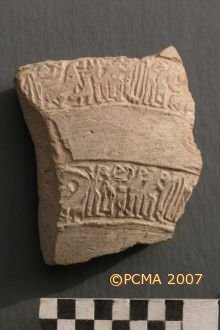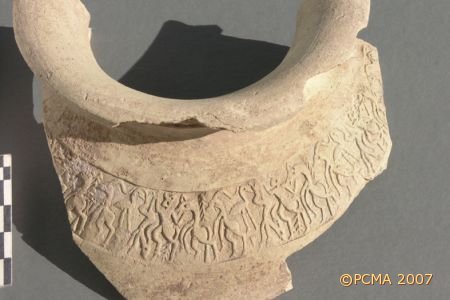Tell Arbid (Syria)
Everything about the 2006 season of the expedition investigating Tell Arbid was different: it took place in the spring instead of the fall and it was shorter than all ten preceding campaigns (from April 18 until May 27); moreover, it set itself different objectives, being more of a study season than regular excavations. Prof. Dr. Piotr Bieliński directed the team – this as usual – conducting limited excavations on the Ninevite settlement on the eastern slope of the tell (Area SD) and to the south of the site (Area W).
The pottery documentation project, which was the chief task of the archaeologists-documentalists on the team, progressed to the point when most of the sherds of Hellenistic and Khabour wares have been recorded. This has prepared the ground for the first volume of the excavation series.
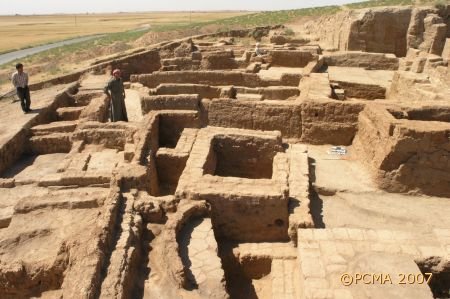
During the limited time at hand the field staff set their sights on removing baulks separating particular squares in Area SD with the purpose of uncovering a larger sector of the Ninevite city. The total area of the ruins cleared down to this level is now 750m2. Investigation of the foundation layers of the „Eastern House” in this area revealed an earlier building that apparently differed slightly in orientation and considerably in function. The rooms in this earlier phase were much smaller and equally well plastered as in the later structure. Domestic installations of all kinds, like tannours, bins, platforms, fireplaces and grills prevailed. Locus 41 offered an excellent example: four small tannours and one grill-like installation with adjacent bin, separated by tiny partition walls into at least three cubicles, occupied a restricted space, only 4 by 3.50m. The street pattern, established for the ED III period in previous campaigns, was found to be of Late Ninevite 5 date, from which time on it functioned with few and minor changes until the end of the millennium.
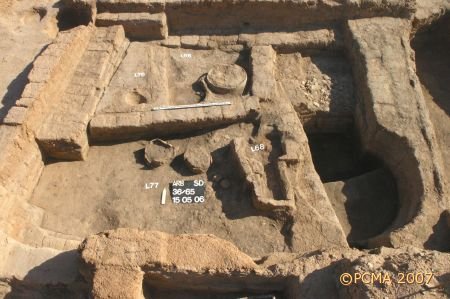
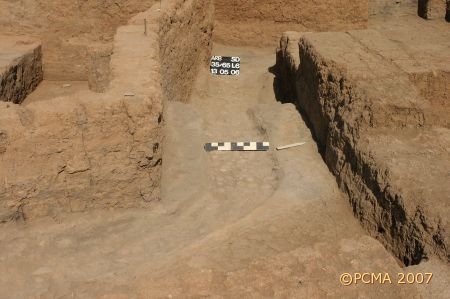
The clearing of a curious single-roomed structure in the western part of Area SD, the alleged ‚shrine’ of two years ago, revealed a 6-m long corridor with a brick-and-stone channel in the bottom carrying waste water not toward the street, but rather from the street to a large storage jar dug into the floor of the strange room. The real function of this installation remains unknown, considering that it lies in a small courtyard relatively far from the street. Another curious structure of Ninevite 5 date was furnished with a semicircular niche in one of the walls, a rectangular bin cut near it, a heating place in the center and three huge rectangular platforms built against another of the walls. All of the installations and the walls had obviously been plastered with considerable skill.
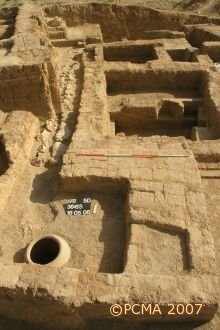
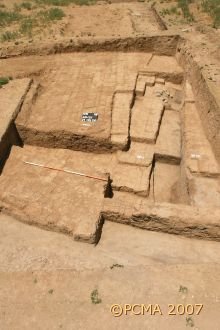
Investigations also continued of a huge mud-brick platform in Area W, apparently built in late Ninevite 5 period. Its present dimensions are at least 25m in length and 2m in width, plus a lower step extending to the east. It was made of typical Ninevite Arbid reddish gritty blocks apparently cased with two or three rows of better-quality yellowish bricks. The foundations of this platform have yet to be reached, but for now it seems to have been at least 1.50m high. Another „biggest-of-all” feature discovered in Ninevite layers this year is a locus, which appears to be the largest single room of its time ever discovered on Tell Arbid. In this 8.50 by 4.50m hall, a deposit of bullae with impressions of cylinder seals was discovered in one of the corners.
